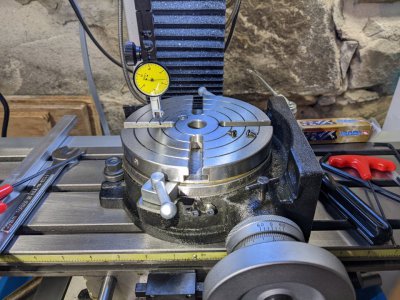Wobbly, you may want to take your RT apart to understand it a little better. Pretty simple & kinda fun

. Look for assembly grit inside, mine was pretty clean & oiled well.
Remember, there is a grub like screw (backlash adjustment) that has to be backed out (I didn’t see this at first) before the handle & worm assembly will pull out. Mine did anyway.
i kinda screwed up when I assembled it the first time by trying it to get all the backlash out. I got it too tight & noticed wear on it the next time I took it apart. My fault.
I now leave a bit of backlash, but I always set up turning the handwheel the same direction, so no harm, no foul.
if you have degree pointer screws (mine was riveted on) that are few degrees off, just make a longer pointer plate.
When I re-assemble mine the zero degree pointer always ends up pointing at the same degree mark, I’m not smart enough to figure out why. Probably simple? dunno.
Also the minute dial zero can be set anywhere you want it with the allan grub screws, but I’m sure you already knew that.
I have to oil all the ball oilers often while using mine. My table seems to need a lot of lube to move smooth.
Once again, I am no expert, but this works for me.
Cheers

